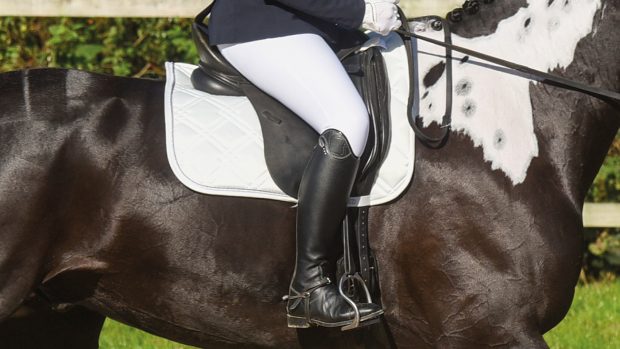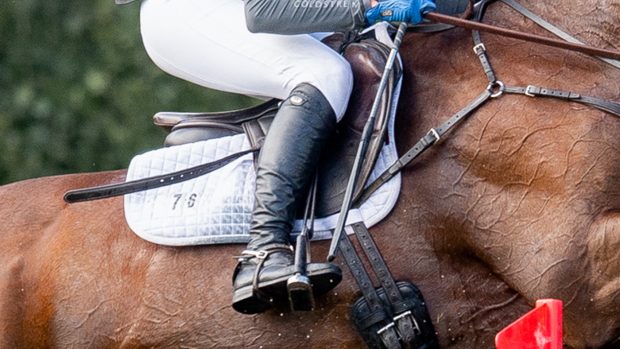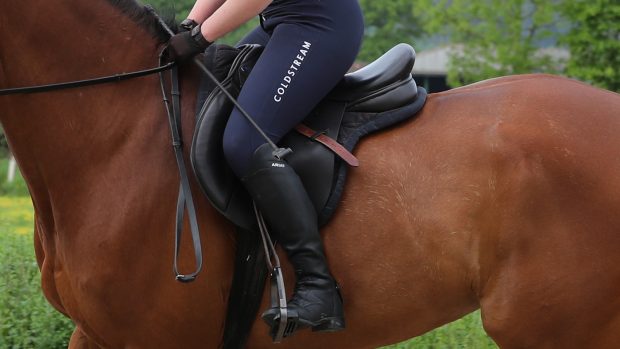Riders have greater stability in saddles without flaps, a new study has claimed.
US researchers collected data from five dressage horses ridden in their own conventional saddles and a flapless saddle provided by EQ Saddle Science.
The conventional, treed saddles featured two flaps — a sweat flap next to the horse’s ribcage where the girth straps lay and a second flap over which the stirrup leathers hang.
The flapless saddle goes one further than a monoflap design, separating the rider’s legs from the horse with a saddlepad only.
The horses used in the study were three European warmbloods, one thoroughbred-warmblood cross, and one Lusitano, all of which were ridden by their regular professional riders to reduce variability in the data.
Each horse was ridden in the flapless saddle twice in the three days prior to the study to allow them to get used to the feel.
Measurements of the horses’ speed and stride length were taken in collected and extended walk, trot and canter and the data between the saddles was compared. A pressure matt (60hz) was also used underneath the saddle to measure the rider’s weight distribution.
While no difference was shown between the stride length or speed in the different saddles, the rider showed less movement in the flapless design.
“Compared with the conventional saddle, the flapless saddle was associated with significant reductions in range of motion of the rider’s centre of pressure in the mediolateral direction [side to side] in all gaits and in the anteroposterior [front-back] direction in collected trot, extended trot and extended canter,” said the study’s authors Hilary M Clayton, Alexandra Hampson, Peter Fraser, Arlene White and Agneta Egenvall.
“The improved stability was thought to result from the absence of saddle flaps allowing the rider’s thighs to lie in more adducted positions, which facilitated the action of the lumbopelvic-hip musculature in stabilising and controlling translations and rotations of the pelvis and trunk.
“The closer contact between rider and horse may also have augmented the transfer of haptic [sense of touch and proprioception] information.”
The study concluded that the use of a flapless saddle particularly improved rider stability in the mediolateral direction and that anterior-posteria movements were better controlled.
“[It was] most notable in trot in which large longitudinal braking and propulsive forces are applied,” it said.
Continues below…

Breastplates change the way horses jump, research finds
Extensive analysis showed that wearing breastplates alters horses’ jump in terms of trajectory and angles

Endurance research to improve welfare
Leading equine vets and scientists are collating information in the field to improve the welfare of horses in endurance

Excess rider weight can cause lameness
Results of a landmark pilot study show the negative effect heavier riders can have on horse performance
“The results suggest that further investigations of horse conformation, rider morphology, and their interaction with different types of equipment are warranted.”
The full study is available in the open-access, peer-reviewed journal PLOS One.
For all the latest news analysis, competition reports, interviews, features and much more, don’t miss Horse & Hound magazine, on sale every Thursday.




